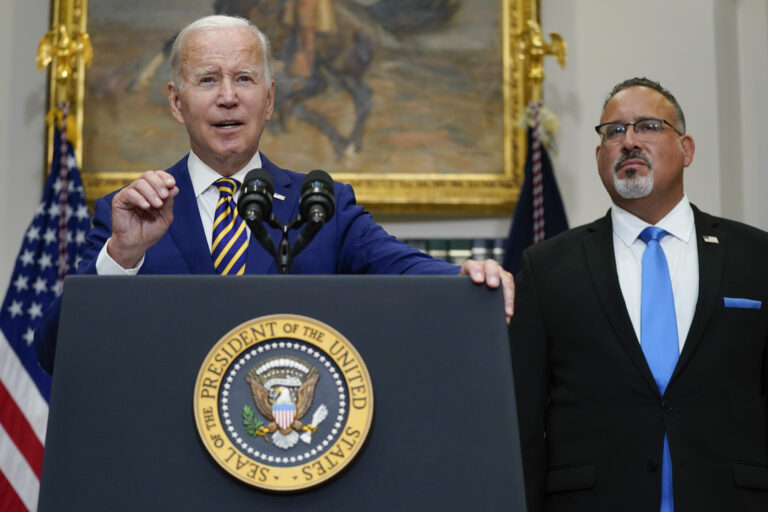WASHINGTON — President Biden’s announcement of a sweeping effort to forgive federal student loan debt – up to $20,000 for Pell Grant recipients, and up to $10,000 for others who qualify – leaves millions of borrowers with unanswered questions, and some of the details won’t be clear for weeks or months.
Here are three big questions borrowers may have:
1. Who will get loan forgiveness?
Americans currently owe about $1.62 trillion in federal student loans. Biden’s plan will provide relief to most of them – 43 million borrowers – and will completely erase the student debt of about 20 million.
But who qualifies?
Individuals with federal student loans who make under $125,000 per year, or couples earning less than $250,000, qualify for up to $10,000 in forgiveness.
That includes current students: Borrowers who are dependent students will be eligible for relief based on their parents’ income. Parent PLUS loans, which are federal loans for parents of undergraduate students, are also eligible under the president’s plan. (Loans taken out after June 30, 2022, will not qualify.)
Qualified borrowers who received Pell Grants are eligible for additional relief – up to $20,000.
Roughly 60% of federal student loan borrowers received Pell Grants, according to the White House. These grants are designed to help low-income students pay for higher education, and about a third of undergraduates with federal student loans receive Pell Grants every year.
2. Do I have to apply?
Many borrowers, while excited about the news, want to know what comes next. The White House said that, in order to benefit, most borrowers will have to submit an application to verify their income. The Education Department said nearly 8 million borrowers already have income information on file, and should qualify to have their debts canceled automatically.
For those 8 million borrowers, that relief may come very soon. And the timetable for those remaining borrowers – some 35 million of them?
“That’s the million dollar question,” Education Secretary Miguel Cardona told NPR’s Mary Louise Kelly.
“We’re improving a system that was broken and antiquated,” he said, adding that it will take time to make the process run smoothly. Cardona urged borrowers to go to https://studentaid.gov/debt-relief-announcement/ for more information and to sign up for automated emails that will provide updates.
3. Will my monthly payments go down?
An unexpected part of Biden’s announcement is a revised plan for what is known as income-driven repayment (IDR), which are designed to help people who cannot afford to make large monthly payments.
Biden’s IDR plan will cut the amount borrowers have to contribute each month – from 10% of their discretionary income to 5%. It will also raise the amount of income that is considered non-discretionary, thus providing more assistance.
While Biden’s loan forgiveness announcement brings immediate relief for many borrowers, Dominique Baker, an associate professor of education policy at Southern Methodist University, says these changes to IDR could bring benefits for years. “When we talk about needing large-scale reform of the student loan system, this would be one of those things,” she said. “This is a good first step.”
9(MDM5MjE5NTg1MDE1Mjk1MTM5NjlkMzI1ZQ000))

